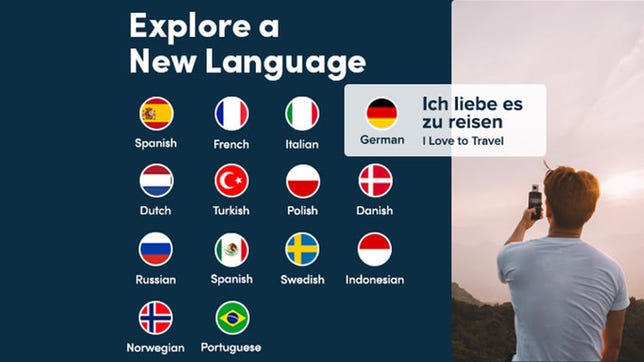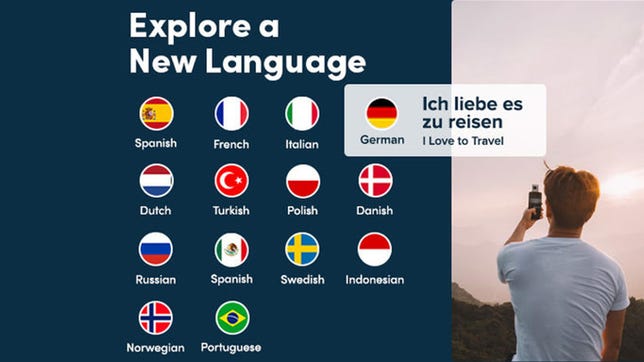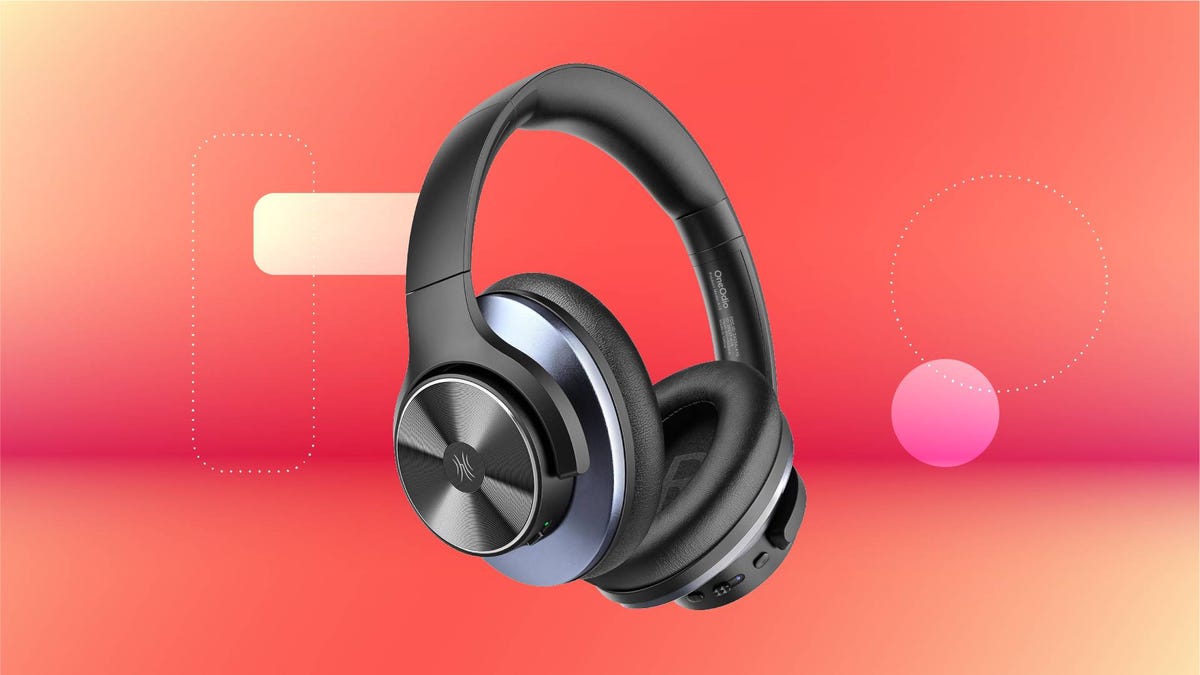Technologies
Master up to 14 Languages With a Lifetime Subscription to Babbel for Just $150 (Save $449)
Learn at your own pace with one of our favorite language learning apps for a fraction of the usual cost.

With a Babbel Language Learning subscription, you can master up to 14 languages, including French, Spanish, Italian and German, all at your own pace. And now through April 19, you can get lifetime access for just $150 — that’s less than 50 cents a day if you use the program for at least one year.
Whether you’re a world traveler or just enjoy learning something new, practicing a new language can be intellectually stimulating and fun. Even knowing the basics of a particular language can be helpful when you’re taking a course or applying for some jobs out there. With so many people communicating across borders in our digitally connected world, mastering a foreign language can be a valuable skill for anyone to have. And compared to the cost of other online courses, developing your language skills with Babbel is a bargain.
Babbel is one of CNET’s favorite language learning apps in 2023, particularly if you want a school-type experience. It offers 14 language courses and more than 10,000 hours of content. The company even touts itself as the shortest path to real-life conversations. You can get a lifetime subscription to Babbel Language Learning software for just $150 at StackSocial right now, saving you $449 on the usual price. If you’re interested in learning a new language (or languages) at your own pace, you can take advantage of this deal now through April 19.
Babbel’s extensive language software includes Spanish, French, Italian, German, Russian, Swedish, Indonesian, Portuguese and more. The lessons are short and to the point, allowing you to practice in 10- to 15-minute intervals that can fit into any schedule. Real-life topics include travel, family, business, food and more. There are also a variety of skill levels available, ranging from beginner to advanced, so the program can grow with you as you improve.

Using the speech-recognition technology will give you immediate feedback on pronunciation so that you don’t just learn to read and write, but to listen and speak, as well. You’ll also get personalized review sessions to reinforce what you’ve learned. The program works across desktop and mobile devices. And though the internet is required most of the time, there is also an offline mode available where you can access courses, lessons and reviews without Wi-Fi, so long as you download them beforehand. Babbel also syncs your progress across your devices so that you can jump in from wherever is most convenient.
Becoming fluent in a new language is a great way to stay engaged in learning, and the transferrable skills you gain can open a lot of doors for leisure, work and beyond. Note that while you can access this program on as many devices as you want, this subscription offer is only available for new users.
Read more: 11 Items to Add to Your Travel Checklist for a Smooth Trip
Technologies
Peloton’s Friday the 13th-Themed Workouts Let You Try to Escape Jason, the Iconic Killer
The company is collaborating with the companies behind the hockey-masked slasher to light a fire under your next workout.

Do you have what it takes to be the final survivor in your favorite horror movie? Or are you too unfit to outrun the murderous slasher from Friday the 13th?
Peloton’s new collaboration with the companies behind the hockey-masked movie murderer, Jason Voorhees, brings the campy horror of Camp Crystal Lake to your exercise routine.
Don’t miss any of our unbiased tech content and lab-based reviews. Add CNET as a preferred Google source.
The exercise company joined forces with Jason Universe and Horror, Inc., the original owners of the Friday the 13th film franchise, to assemble three classes inspired by the infamous movie killer. Instructors, appropriately dressed as camp counselors, run themed exercises based on trying to survive Jason’s rampage.
The first class, a 30-minute ride with instructor Camila Ramón, runs from the Peloton studio to Camp Crystal Lake. As cyclists get closer to their final destination, it becomes clear that they’re riding for their lives.
The second class is a 30-minute boot camp with instructor Rebecca Kennedy, focused on improving muscle strength. Kennedy starts with a normal routine before transitioning into training about how to escape the creepy camp.
The session concludes with a 10-minute meditation with instructor Denis Morton focused on breathing techniques that help with «facing your demons and finding calm in scary times.»
Immersive storytelling meets exercise
The new series of exercises is a clever bit of storytelling that blurs the line between reality and fiction. This Jason-themed narrative feels like Peloton’s attempt at an alternate reality game.
«We’re so excited to bring this haunting series to our Members, unlocking a new way for our community to experience a physical journey like never before,» said Ramón. «Reimagining the Jason Universe and Camp Crystal Lake onto our platform allows us to explore a new type of immersive storytelling.»
If you want to survive Jason’s latest killing spree, you’ll have to train hard. While the killer usually ambles forward at a glacial pace, he always seems to show up just when someone gets too comfortable. The original Friday the 13th movie came out 45 years ago, so Jason has decades of slasher experience under his moldering belt.
All three of the new Jason-themed Peloton classes are available to members now. A commemorative limited edition T-shirt featuring Jason Voorhees is also available on Peloton’s apparel website. The scariest thing is its price — $49.
Technologies
Amazon Prime’s $2.5 FTC Settlement: Learn Who’s Eligible and How Much Payouts Will Be
The online retail giant will soon begin paying misled customers who subscribed to Amazon Prime.

If you thought your Amazon Prime signup process was a little confusing, it’s not just you. The Federal Trade Commission filed a lawsuit against Amazon in 2023, alleging that the retail giant misled customers in marketing Prime subscriptions to its customers. In September, Amazon agreed to pay a $2.5 billion settlement, one of the largest in US history.
The FTC said $1.5 billion will go into a fund to repay eligible subscribers, with the remaining $1 billion collected as a civil penalty. And while Amazon did not admit to wrongdoing, it’s still making changes to how it presents the service. The settlement requires Amazon to add a «clear and conspicuous» option to decline Prime during checkout and to simplify the cancellation process.
«Amazon and our executives have always followed the law, and this settlement allows us to move forward and focus on innovating for customers,» Mark Blafkin, Amazon senior manager, said in a statement. «We work incredibly hard to make it clear and simple for customers to both sign up or cancel their Prime membership, and to offer substantial value for our many millions of loyal Prime members around the world.»
Don’t miss any of our unbiased tech content and lab-based reviews. Add CNET as a preferred Google source.
Why did the FTC file a lawsuit against Amazon?
The FTC filed suit against Amazon accused the company of using «dark patterns» to nudge people into Prime subscriptions and then making it too hard to cancel. The FTC maintained Amazon was in violation of Section 5 of the FTC Act and the Restore Online Shoppers’ Confidence Act.
«Specifically, Amazon used manipulative, coercive or deceptive user-interface designs known as ‘dark patterns’ to trick consumers into enrolling in automatically renewing Prime subscriptions,» the FTC complaint states.
Who’s eligible for Amazon’s payout?
Amazon’s legal settlement is limited to customers who enrolled in Amazon Prime between June 23, 2019, and June 23, 2025. It’s also restricted to customers who subscribed to Prime using a «challenged enrollment flow» or who enrolled in Prime through any method but were unsuccessful in canceling their memberships.
The FTC called out specific enrollment pages, including Prime Video enrollment, the Universal Prime Decision page, the Shipping Option Select page and the Single Page Checkout. To qualify for a payout, claimants must also not have used more than 10 Amazon Prime benefits in any 12-month period.
Customers who signed up via those challenged processes and did not use more than three Prime benefits within one year will be paid automatically by Amazon within 90 days. Other eligible Amazon customers will need to file a claim, and Amazon is required to send notices to those people within 30 days of making its automatic payments.
Customers who did not use a challenged sign-up process but instead were unable to cancel their memberships will also need to file claims for payment.
How big will the Amazon payments be?
Payouts to eligible Amazon claimants will be limited to a maximum of $51. That amount could be reduced depending on the number of Amazon Prime benefits you used while subscribed to the service. Those benefits include free two-day shipping, watching shows or movies on Prime Video or Whole Foods grocery discounts.
Customers who qualify for the payments should receive them by Dec. 24.Customers outside the US aren’t eligible for the payout.
Technologies
These Already Affordable ANC OneOdio Headphones Are Even Better at $26 Off
They’re one of our favorite noise-canceling pairs for less than $100, and you can snag some for a record-low $64 right now.

Though you could easily drop $300 or even more, you don’t need to spend a fortune to get yourself a decent pair of headphones these days. There are some excellent budget-friendly options out there that still have plenty to offer, and right now you can snag one of our favorite pairs of 2025 for even less. Amazon has knocked $26 off the OneOdio A10s, which brings them down to a record-low $64. Though this deal could expire at any time, so be sure to get your order in soon.
These over-ear OneOdio headphones earned a spot on our list of the best noise-canceling pairs under $100 thanks to their sturdy design and superior comfort. According to CNET audio expert David Carnoy, they also «sound surprisingly decent and have reasonably good noise canceling with a transparency mode.» Plus, they boast an impressive 50-hour battery life and have a 3.5mm aux port for wired listening as well.
Don’t miss any of our unbiased tech content and lab-based reviews. Add CNET as a preferred Google source.
HEADPHONE DEALS OF THE WEEK
-
$300 (save $51)
-
$299 (save $151)
-
$220 (save $180)
Why this deal matters
Having earned a spot on our list of the best budget noise-canceling headphones, the OneOdio A10s are already a decent value at full price. So a chance to grab a pair on sale — let alone for a record-low price — is a serious bargain. They have a sturdy design, impressive sound and decent noise-canceling capabilities, which is a solid set of features for less than $70.
Though there are plenty of other excellent headphone deals available now, if you’re on the hunt for a different pair.
Join Our Daily Deals Text Group!
Get hand-picked deals from CNET shopping experts straight to your phone.
By signing up, you confirm you are 16+ and agree to receive recurring marketing messages at the phone number provided. Consent is not a condition of purchase. Reply STOP to unsubscribe. Msg & data rates may apply. View our Privacy Policy and Terms of Use.
-

 Technologies3 года ago
Technologies3 года agoTech Companies Need to Be Held Accountable for Security, Experts Say
-

 Technologies3 года ago
Technologies3 года agoBest Handheld Game Console in 2023
-

 Technologies3 года ago
Technologies3 года agoTighten Up Your VR Game With the Best Head Straps for Quest 2
-

 Technologies4 года ago
Technologies4 года agoVerum, Wickr and Threema: next generation secured messengers
-

 Technologies4 года ago
Technologies4 года agoBlack Friday 2021: The best deals on TVs, headphones, kitchenware, and more
-

 Technologies4 года ago
Technologies4 года agoGoogle to require vaccinations as Silicon Valley rethinks return-to-office policies
-

 Technologies4 года ago
Technologies4 года agoOlivia Harlan Dekker for Verum Messenger
-

 Technologies4 года ago
Technologies4 года agoiPhone 13 event: How to watch Apple’s big announcement tomorrow

